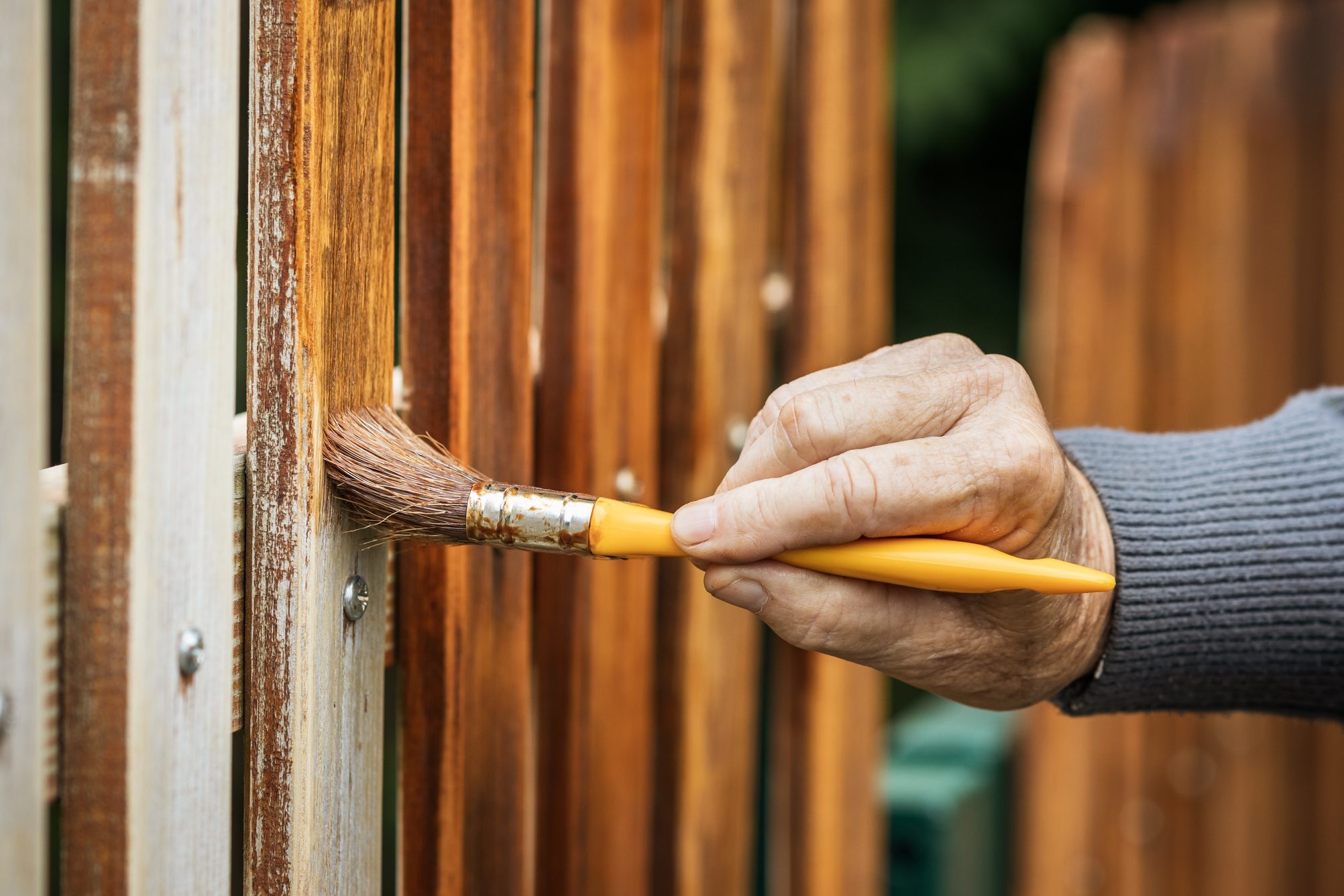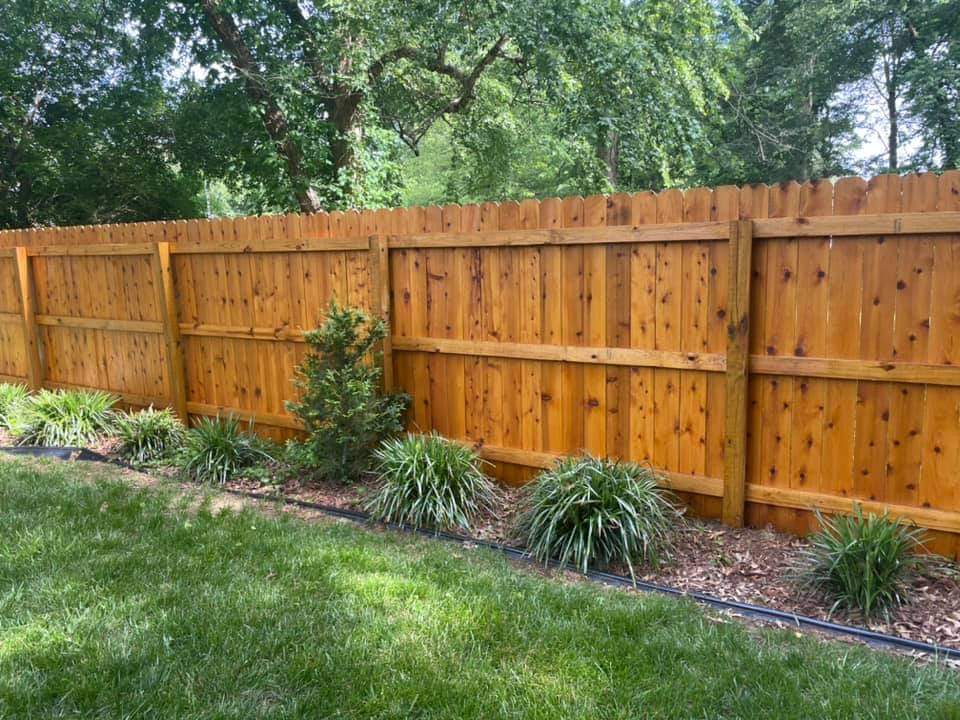Vital Tips for Deck Discoloration Success
Achieving a flawlessly stained deck calls for more than simply a brush and a canister of stain. From choosing the ideal type of tarnish to understanding the art of application, each phase plays a vital role in the last result.
Selecting the Right Stain
Selecting the ideal stain is vital in attaining a long lasting and aesthetically pleasing coating for your deck. fence cleaning near me. When picking a stain for your deck, it is vital to consider aspects such as the timber type, wanted color, level of security required, and maintenance choices
Firstly, take into consideration the kind of wood your deck is made of, as different timber varieties might react in different ways to specific types of discolorations. Hardwoods like oak or mahogany may require different spots compared to softwoods like ache or cedar. Comprehending the attributes of the wood will certainly aid you pick a tarnish that permeates effectively and enhances its all-natural beauty.
Next, consider the shade you desire for your deck. Spots can be found in a variety of tones, from all-natural tones that boost the wood's grain to even more opaque shades that provide better UV protection. Choose a shade that enhances your exterior room and matches your aesthetic preferences.
Moreover, assess the level of defense the tarnish offers. Some discolorations offer more comprehensive defense versus UV rays, moisture, and mildew, which can extend the life of your deck. Balancing security with aesthetics is vital to attaining a visually enticing and resilient coating.
Preparing the Deck Surface
To make sure a successful application of the picked discolor, comprehensive prep work of the deck surface is crucial. Use a deck cleaner or wood brightener along with a stiff-bristled brush to scrub the surface area tidy.
Replace or fix these as needed to make sure the architectural stability of the deck. This action not just assists the stain stick much better however likewise improves the total appearance of the deck.
Using the Discoloration Properly

When using the discolor, make use of a paintbrush, sprayer, or roller , depending on the type of tarnish and the size of the deck. Apply the discolor in the direction of the timber grain to guarantee also insurance coverage and a specialist coating.
Enable the very first layer to dry entirely prior to choosing if a second layer is needed. Follow the manufacturer's guidelines regarding drying out times and reapplication. Proper application of the stain is important for protecting your deck and improving its look for several years ahead.
Maintaining Your Tarnished Deck
After successfully applying the discolor to your deck, keeping its appearance and linked here protective qualities is crucial for long-lasting sturdiness and visual charm. Normal upkeep is key to preserving the beauty and integrity of your stained deck. To keep your deck looking its ideal, it is advised to cleanse it at the very least annually. Use a mild cleaning agent and water to get rid of dirt, crud, and mildew that can gather on the surface. Additionally, check your deck annually for any type of signs of wear or damages. Dealing with issues quickly can prevent them from getting worse and expand the life of your discolored deck. Depending upon the foot website traffic and direct exposure to the aspects, you might need to reapply a fresh layer of discolor every 2-4 years. This will help preserve the shade and protective coating of your deck, guaranteeing that it remains to enhance your outdoor room for many years to find.

Troubleshooting Common Issues
Determining and addressing usual concerns that might arise with your stained deck is important for guaranteeing its long life and ideal efficiency. One typical problem is peeling or flaking of the stain. This can occur due to bad adhesion created by inadequate surface area preparation or applying the discolor in undesirable climate condition. To treat this, the impacted areas require to be stripped, sanded, and effectively re-stained complying with producer standards.
One more issue typically encountered is mold and mildew growth on the deck surface area. This can be associated to moisture retention, absence of sunlight, or incorrect ventilation. To tackle this problem, an extensive cleaning with a mold and mildew and mold eliminator complied with metro fence company by proper drying and application of a mold-resistant tarnish is crucial.
Furthermore, fading of the tarnish color with time is a common problem. UV direct exposure and harsh weather can trigger discoloration. To address this, picking a high-quality, UV-resistant stain and applying a fresh coat regularly can aid preserve the deck's visual allure.

Verdict
To conclude, successful deck staining needs choosing the best tarnish, correctly preparing the deck surface area, using the tarnish properly, and keeping the stained deck. By following these necessary suggestions, you can achieve a wonderfully tarnished deck that enhances the overall appearance of your outdoor room. Keep in mind to fix any common issues that might occur throughout the staining Read Full Article procedure to make sure a visually enticing and durable outcome.
Accomplishing a flawlessly discolored deck calls for even more than simply a brush and a canister of stain.To make certain an effective application of the selected discolor, thorough preparation of the deck surface is necessary. When applying the tarnish, use a sprayer, paintbrush, or roller , depending on the kind of stain and the dimension of the deck.Recognizing and resolving usual concerns that might arise with your tarnished deck is crucial for guaranteeing its durability and optimum efficiency.In final thought, effective deck discoloration needs selecting the appropriate tarnish, correctly preparing the deck surface area, applying the discolor correctly, and keeping the discolored deck.